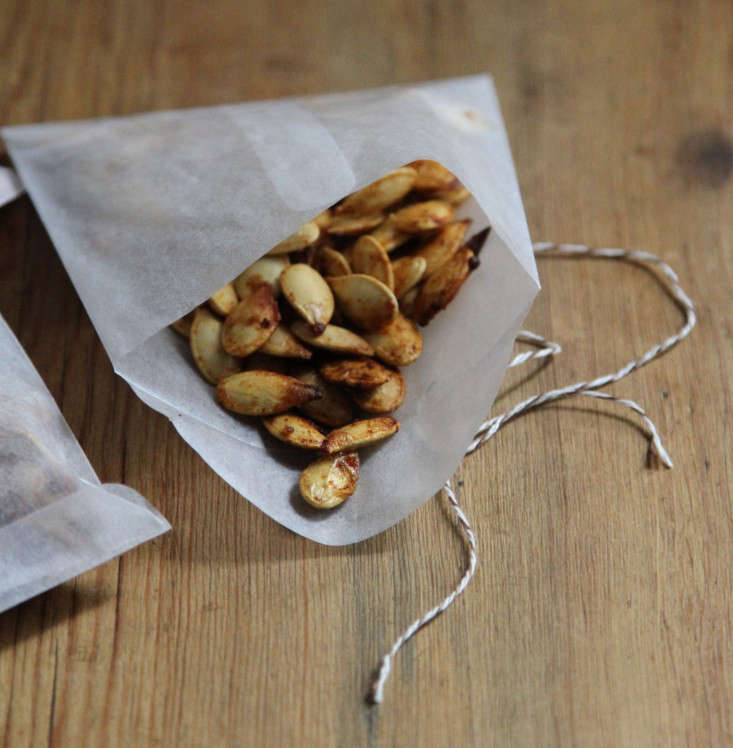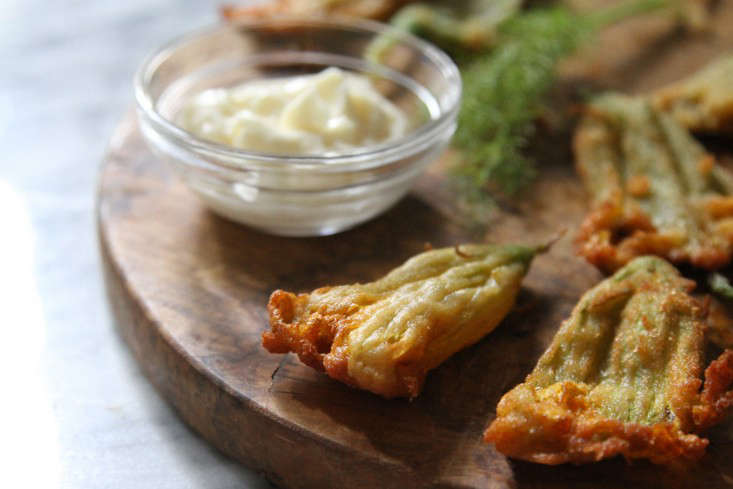Pumpkin, Cucurbita: “The Horseman’s Head”
From Washington Irving’s Legend of Sleepy Hollow to Harry Potter to Cinderella’s coach, a squash somehow has managed to carve out a permanent place for itself in our mythology of magic and superstition. What separates a pumpkin from its less glamorous relatives in the thick-skinned winter squash family?
Above: Photograph by Erin Boyle.
Scientists have spent decades deciding that the answer lies in the stem–a true pumpkin has a prickly stem set at a 5-degree angle from the yellowy orange fruit. And yet. The pumpkin hails from humble roots: from the Greek word pepon meaning “large melon” (the settlers who discovered the North American native plant believed it to be an estranged cousin of the European cantaloupe).
Above: Photograph by Christine Chitnis for Gardenista.
Best Jack-o-lantern? The Connecticut Field pumpkin. Most delicious: sugar pumpkin. (Save the seeds to plant in spring.)
Or buy pumpkin seed now to plant next May. The best varieties? See our post 10 Easy Pieces: Best Pumpkins to Plant for Next Halloween.
Cheat Sheet
- Edible, yes, but also ornamental. Let a pumpkin’s long vine hang like a necklace over the edge of a garden bed.
- Grow colorful flowers next to pumpkins to attract more bees and butterflies.
- White, black, and blue pumpkins can do double duty as Halloween and Thanksgiving decor (if you don’t carve them, they won’t rot).
Above: Casper Pumpkin Seeds from Homestead Seeds. Photograph by Janet Hall.
Keep It Alive
- Plant seeds in late May or early June.
- Likes full sun and heavy (but infrequent) watering.
- Vines need from 20 to 30 feet of space to spread.
Above: A classic carving pumpkin is Charisma. Photograph by Janet Hall.
Grow pumpkin from seed and allow vines to trail; if you allow a pumpkin plant plenty of room to grow–that means from 20 to 30 feet of space–you will have beautiful blossoms in summer, as well as plenty of candidates for snaggle-toothed Jack-o-lanterns in October.
Above: Carving a pumpkin this week? Your reward for all that hard work is Erin’s recipe for Spicy and Sweet Roasted Pumpkin Seeds. Photograph by Erin Boyle.
Above: Let us not overlook the rest of the squash family. Try our recipes for Easy Squash Blossom Tempura and Zucchini Carpaccio.
Planning next year’s edible garden? We suggest you make room for Chives, Thyme, and Spinach. Browse our Gardening 101 archives to find more favorites.















Have a Question or Comment About This Post?
Join the conversation